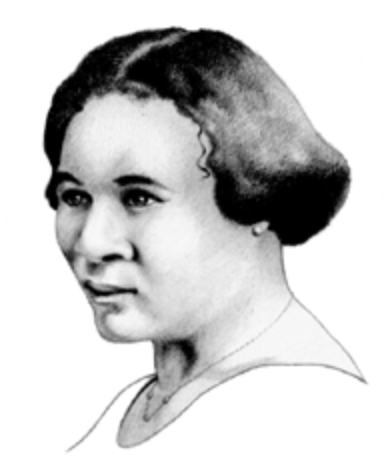Madam Walker
Few historical figures of the latter part of the 19th century fit the profile of inventor, entrepreneur and philanthropist like Madam C.J. Walker. Having endured a difficult childhood, being female, African American, with virtually no formal education and with no family inheritance or outside resources to rely on, she overcame a series of formidable obstacles to become one of the wealthiest, most successful women in the United States in the early 1900s. She is considered a revolutionary in the area of personal hygiene and grooming for the nation’s black women, having begun an initiative to educate and give them tools to stay healthy and look their best, in particular, via her creation of the Walker Hair Care System.
Born by the name of Sarah Breedlove in Delta, Louisiana, on December 23, 1867, she was the second youngest of six children born to Owen and Minerva Anderson Breedlove, who had been slaves on the Burney plantation there. She was the first of their children to be born after slavery was officially declared dead, with the end of the Civil War in 1865.
By the time she was eight years old, both of Walker’s parents had passed away. She moved to Mississippi, married at 14 and gave birth to a daughter at age 17. Her husband died in 1887, when she was 20. Shortly thereafter she moved with her daughter to St. Louis, Missouri, where she spent 18 years working as a laundress.
It was in St. Louis that Walker thought of putting together the ingredients for a solution that would treat a then-common scalp disease, using massage, frequent shampooing, and an ointment or pomade containing therapeutic sulfur. The system also employed hot combs, though she did not invent this tool, despite its having been credited to her in the past. It was said that she herself had begun losing her hair, and claimed to have come up with her medicinal idea in a dream. She is also, however, said to have worked with some of the solutions made by another enterprising black woman, Annie Malone, who had begun her own beauty products business.
Determined to start a successful business of her own, she moved to Denver, Colorado, in 1905 where she married Charles Joseph Walker. She changed her name and began promoting her products throughout the South under the name Madam C.J. Walker. She worked tirelessly, traveling extensively and showing black women how to treat and care for their hair, selling “Madam Walker’s Wonderful Hair Grower” at first, and later, a variety of cosmetics and hair care products. She hired numerous sales persons, or what she called “hair culturists,” to go door to door and make house calls.
The Walker system had a straightening effect that was very appealing for many black and some white women, and was much more healthy and effective than the popular method of using a hot iron to achieve this look. Before long her business grew to the point where she needed a second office. She launched it in Pittsburgh in 1908. She also began training staff in her own “Walker Schools.”
In 1910, Walker consolidated her operations to a new headquarters in Indianapolis, Indiana. There she built the main plant for the Walker Manufacturing Company. She continued to add to her sales force, employing anywhere from 2,000 to 10,000 or more “Walker agents” in the U.S. and the Caribbean, providing lucrative work for black women who might have otherwise only been able to find menial work as maids or cooks.
Not afraid to defy stereotypes or to take chances, Walker’s business continued to grow until she had a payroll that topped $200,000 per year. She became a very rich, self-made woman, rare for a woman at all at the time, even rarer still for a black woman. She was generous with her fortune, donating a great deal of money to charity and to schools, including the YMCA and the NAACP.
In 1916, Walker moved to New York where she built a mansion, Villa Lewaro, at Irvington-on-the Hudson. She died there on May 25, 1919 at the age of 51 from kidney failure. At the time of her death her estate was worth the equivalent of nearly $7 million in today’s dollars.
Her business continued to thrive for several decades: When the popular Parisian black entertainer Josephine Baker began using Walker’s hair-straightening system in the 1920s, business got even more of a boost, especially overseas. The Madam C.J. Walker Manufacturing Company headquarters in Indianapolis functioned until 1985, when the company sold its product rights and closed its doors for good. The original building is now a national historic landmark known as Madam Walker Theatre Center.
Walker has been posthumously inducted into the National Business Hall of Fame at the Museum of Science and Industry in Chicago and the National Women's Hall of Fame, and in 1998 she was honored with a U. S. postage stamp as part of the Black Heritage Series. Her trailblazing life has been detailed in a book written by her great-great granddaughter, A’Lelia Bundles, called “On Her Own Ground: The Life and Times of Madam C.J. Walker.”


